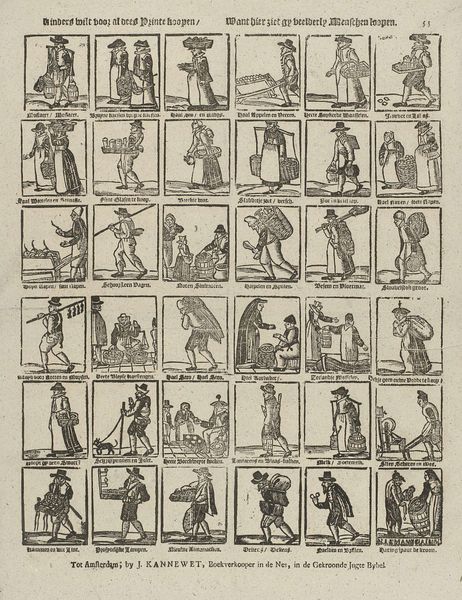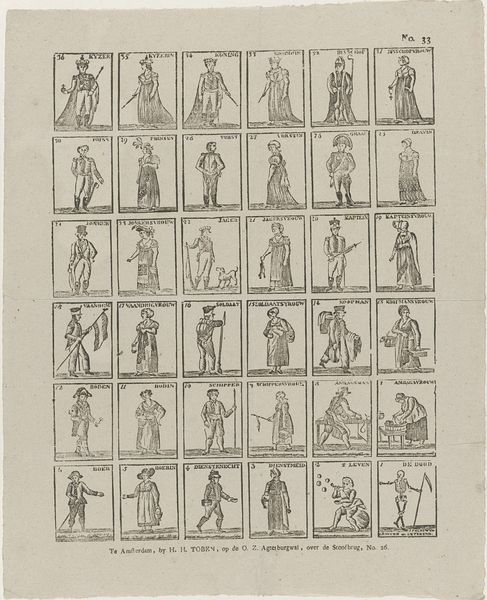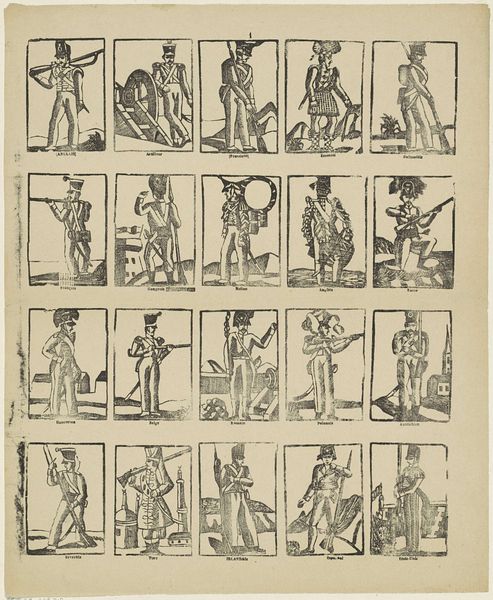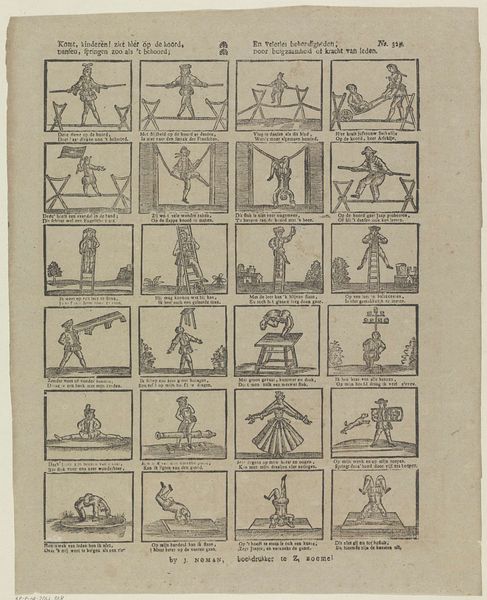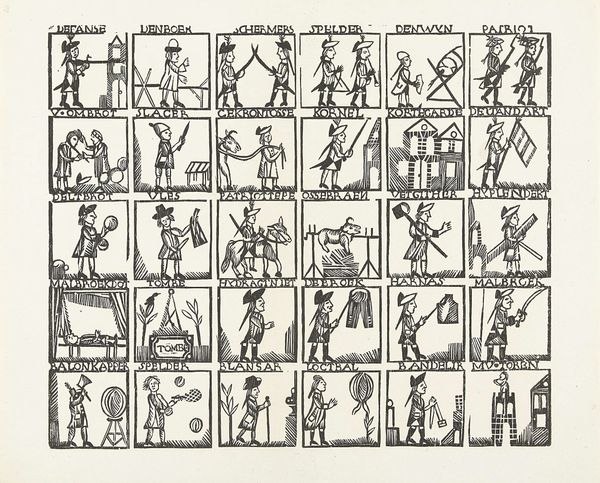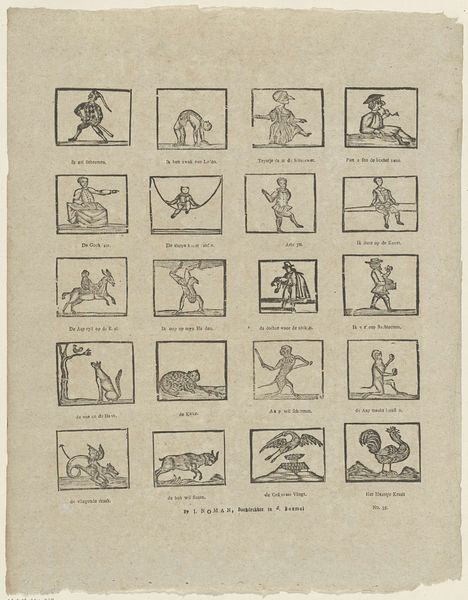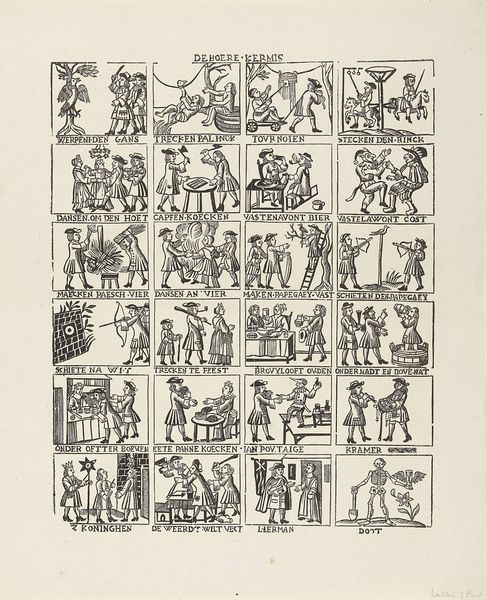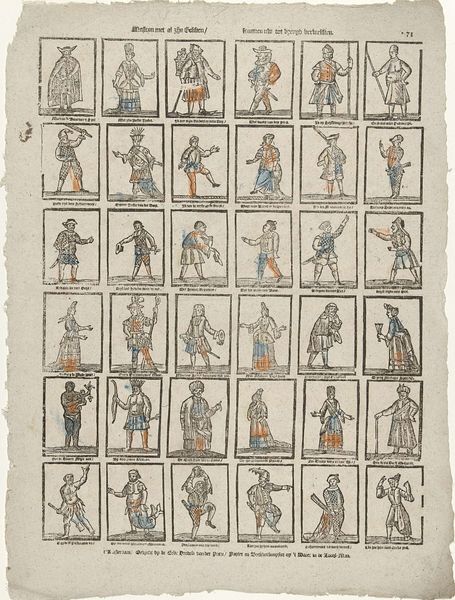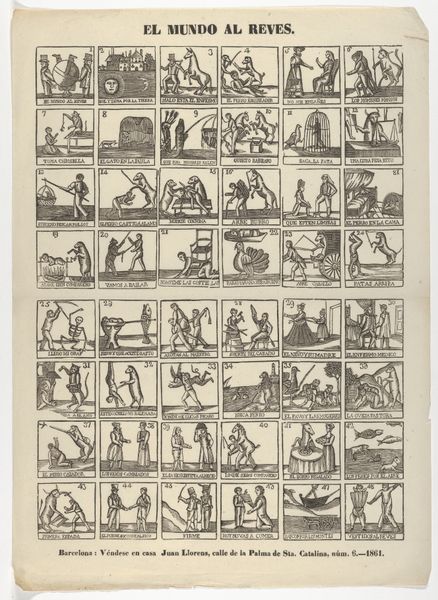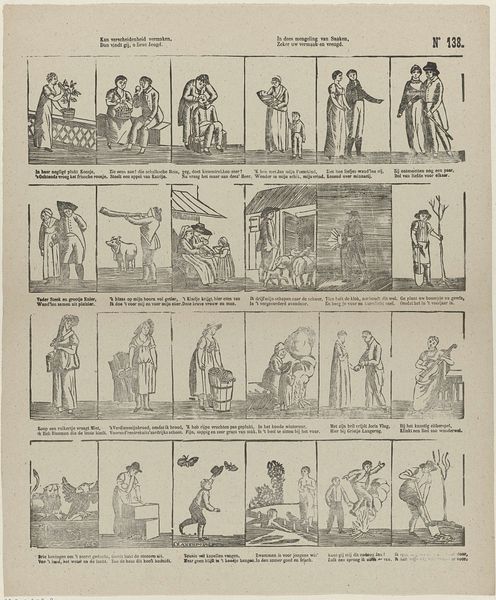
graphic-art, print, woodcut
#
graphic-art
#
comic strip sketch
#
medieval
#
quirky sketch
#
narrative-art
# print
#
sketch book
#
figuration
#
personal sketchbook
#
idea generation sketch
#
sketchwork
#
thumbnail sketching
#
woodcut
#
line
#
sketchbook drawing
#
genre-painting
#
storyboard and sketchbook work
#
sketchbook art
Dimensions: height 390 mm, width 323 mm
Copyright: Rijks Museum: Open Domain
Editor: This is "Floskaartjes," a print, probably a woodcut, by Glenisson & Van Genechten, made sometime between 1833 and 1870. It’s fascinating— a whole grid of characters. It has the feel of a playing card sheet. What first strikes you when you look at this work? Curator: The initial impact resides in the presentation of social roles—almost a sociological inventory visualized. We see archetypes of power like ‘Keizer’ and ‘Koning’, everyday figures such as ‘Schipper’ (skipper) and ‘Dienstmeid’ (maid), and even symbolic figures like ‘Dood’ (death). The cultural memory embedded here points to a rigid social structure being codified and circulated. Do you sense any commentary being offered through these specific choices? Editor: Maybe it's just a comprehensive snapshot of society, but the juxtaposition is definitely thought-provoking. 'Death' is right next to 'Leven' (Life). Do you think this reflects particular anxieties or ideals of the time? Curator: Indeed, their proximity isn't accidental. Consider the period; 19th century Europe was undergoing significant societal shifts. Presenting 'Life' and 'Death' side-by-side echoes the pervasive anxieties about mortality amidst industrial change. Notice also how profession and gender are explicitly called out: Soldaat, Soldaatvrouw; Schipper, Schippersvrouw… What might that signal about their worldview? Editor: So, it's about fixing people within a certain societal role? Almost like a cultural or social snapshot to reinforce established order? Curator: Precisely. It’s a fascinating, miniature mirror reflecting societal roles, anxieties, and a subtle form of social control communicated through accessible imagery. Editor: That adds another layer of meaning. Seeing it as a tool of social codification rather than a mere depiction of jobs, gives a clearer insight. Curator: Visual symbols speak volumes when we learn to listen for their psychological and cultural echoes across time. This little card gives us so much.
Comments
No comments
Be the first to comment and join the conversation on the ultimate creative platform.
